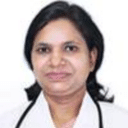Women Related Cancer - Knowing The Prevention & Treatment Of It!
With the modernization of all economies around the world, one health hazard that has become one of the largest perils within both developed and developing nations is the incidence of cancers of the female reproductive system, especially cervical and breast cancer.
Breast cancer
Breast cancer is the formation of malignant tumors within the breast tissues of a woman. Usually, breast cancer affects women in the age range of 40 to 50, but there have been many reports of it occurring earlier. About 48 % percent of the Indian women having breast cancer have been reported to be under 50. This is an almost 17 percent jump compared to figures 25 years earlier.
Alarming Signs of Breast Cancer:
- The most common symptom of breast cancer is a new lump or mass. A painless, hard mass that has irregular edges is more likely to be cancerous, but breast cancers can be tender, soft, or rounded.
- Swelling of all or part of a breast (even if no distinct lump is felt)
- Skin irritation or dimpling
- Breast or nipple pain
- Nipple retraction (turning inward)
- Redness, scaliness, or thickening of the nipple or breast skin
- Nipple discharge (other than breast milk)
Screening Guidelines for Breast cancer:
- Mammography: US Preventive Services Task Force (USPSTF) recommends mammography once in every 2 year for females between age group 50-75 years. Women with a family history has a benefit of starting at age 40 years. After 75 years there are insufficient evidence of benefit of screening mammography.
- Breast Self Examination and annual Clinical examination: breast self examination is easy to learn and and any abnormality should be reported to the oncologist.
- For High Risk/ Genetic risk factors: screening should start by age 25 or 10 years earlier of youngest relative affected. Annual mammogram and MRI or Doppler ultrasound alternating at 6 month interval can be considered.
Treatment Options:
Some of the common treatment options for breast cancers are:
- Breast conservation surgery - This is where the tumors are removed without cutting out too much of the surrounding breast tissue.
- Mastectomy - If the cancer has spread too far then large amounts of breast tissue has to be removed along with the tumor to stop its spread any further.
- Sentinel lymph node Biopsy - it's part of both surgical procedures, it decreases morbidities of lymph node dissection first draining lymph nodes only are removed in patients with clinically negative axilla. If negative on frozen section further axillary dissection is avoided. It avoids the morbidity of complete axillary clearance.
The other options to treat breast cancer are chemotherapy, hormone therapy, targeted therapy and radiotherapy.
Cervical cancer ( Carcinoma Cervix)
Cervical cancer is the cancer of the cervix, which is the opening of the uterus and connects the uterus to the vagina. Indian women in particular are susceptible to cervical cancer as more than 1/3rd of the cervical cancer related deaths in the entire world happens here in India, which is about 74000 deaths annually. The leading cause for cervical cancer is HPV or Human Papillomavirus infection, which if left untreated and unchecked will result in cancer.
Alarming Signs of Cervical Carcinoma:
- Early lesions and precancerous lesions have no symptoms
- Abnormal vaginal bleeding such as bleeding after vaginal intercourse, bleeding after menopause, bleeding and spotting between periods or longer/heavier periods
- Abnormal vaginal discharge
- Pelvic pain
- Late stage disease may cause lower extremity swelling, problem with urine and/or stool passage
Screening Guidelines:
- Cervical cancer screening is most effective screening programme of any cancer disease resulting in significant decrease in mortality from carcinoma cervix
- United state preventive services task force (USPSTF) recommend cervical cancer screening starting at age 21 yrs.
- Between age 21-30 years cytology recommended at 3 year interval and HPV testing is not recommended.
- Between 30-65 years cytology every 3 year or cytology +HPV testing every 5 year.
- If previously adequately screened screening can be discontinued after 65 years.
- Women with prior total hysterectomy and no CIN can discontinue screening.
Apart from breast and cervical cancers, certain other cancers have also reported an alarming increase such as:-
Ovarian cancer (Carcinoma Ovary)
Starting in the ovaries, diagnosis of this type of cancer is usually delayed due to lack of visible symptoms in the initial stages. About 85% to 90% of ovarian cancers are epithelial ovarian carcinomas. Epithelial ovarian cancers tend to spread to the lining and organs of the pelvis and abdomen (belly) first. This may lead to the buildup of fluid in the abdominal cavity (called ascites). As it advances, it may spread to the lung and liver, or, rarely, to the brain, bones, or skin. The main treatments for ovarian cancer are surgery and chemotherapy.
Cancer of the endometrium (Carcinoma Endometrium)
Endometrium is the lining of the uterine wall and has along with ovarian, uterine and cervical cancer is also increasing in occurrences throughout India and the world.
The grade of an endometrial cancer is based on how much the cancer forms glands that look similar to those found in normal, healthy endometrium.
Treatment Options:
Cervical cancer along with Ovarian, uterine and endometrial cancer can be treated using the following methods:
1. Surgery: Radical Hysterectomy primarily preferred option for early stage disease. Both open and minimal invasive approaches are suitable.
- For precancer high grade lesion conisation is also option for compliant patient.
- In young suitable patient willing for childbearing trachelectomy is also possible in very early lesion.
- Depending on risk factors after surgery adjuvant treatment may be advised.
2. Radiation therapy or Combined Radiation therapy+Chemotherapy: Alternative to surgery in early stage and choice in late stage.
Prevention:
Certain prevention techniques that would be advisable to detect cancer in its early stages would be,



+1.svg)
